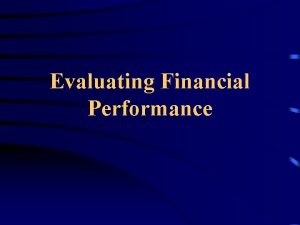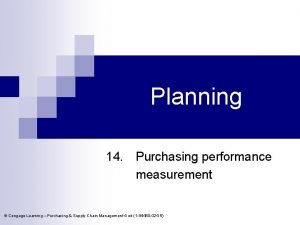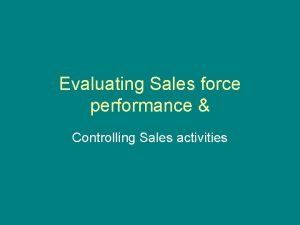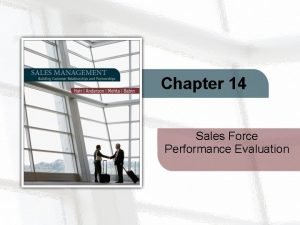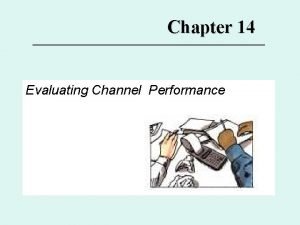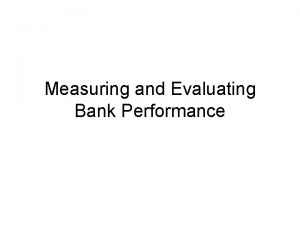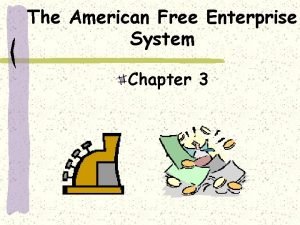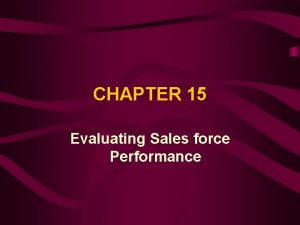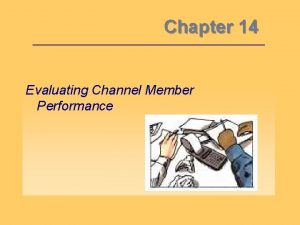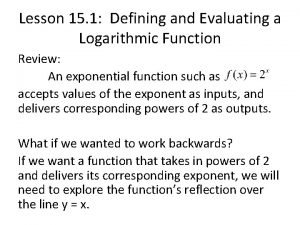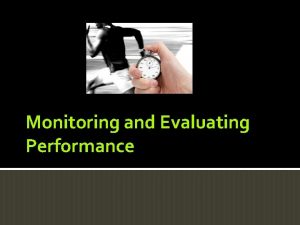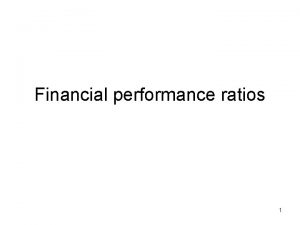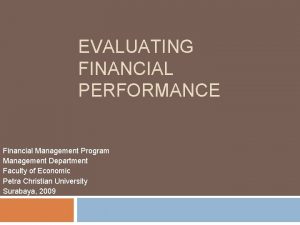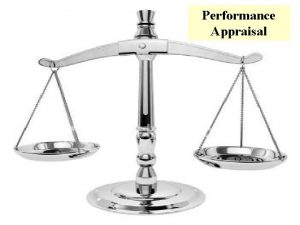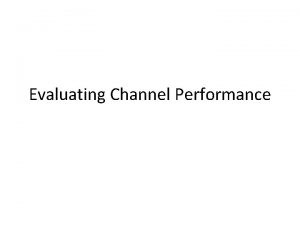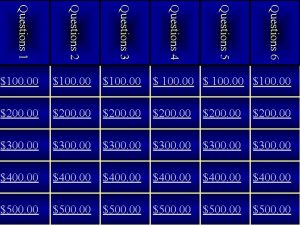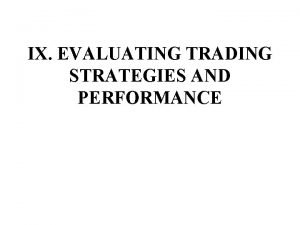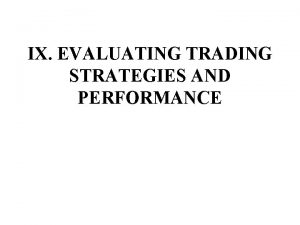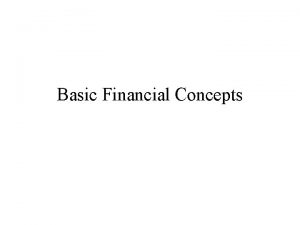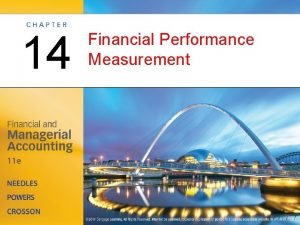Evaluating Financial Performance The Key Questions 1 Does

















- Slides: 17

Evaluating Financial Performance

The Key Questions: 1. Does the firm have the ability to meet maturing financial obligations? 2. Does management do a good job at generating operating profits on the firm’s assets? 3. How is the firm financed? 4. Do the owners’ receive a good rate of return on their equity capital (return on equity)?

Ability to Meet Maturing Obligations Balance sheet perspective Current ratio = current assets ÷ current debt Quick ratio = (cash + accts receiv) ÷ current debt Asset flow perspective: Accts receivable = sales ÷ accts receivables turnover Inventory turnover = cost of goods sold ÷ inventories

Evaluating a Firm’s Operating Profitability Is management doing a good job at generating profitability on the firm’s assets?

The answer is based on one and only one ratio: Operating return on assets = Operating Income Total Assets But once we answer this question, we do not stop. We want to know: Why is the OROA high or low relative to competition? ?

To answer this second question, we look at the two pieces of OROA: OROA = Operating Profit margin X Total asset turnover or more completely, OROA = Operating profits Sales X Sales Total Assets

The first piece is the operating profit margin: OROA = Operating Profits Sales Use a Common Sized Income Statement to understand the operating margin X Sales Total Assets

For example, IRM, Inc. compared to a peer company: gross profit margin Sales Cost of goods sold Gross profits Operating expenses: Selling & marketing General & admin operating Depreciation expense profit margin Total operating expenses IRM, Inc. Peer Co. $400100% 24060% 50% $16040% 50% $48 12% 24 11% 32 7% 12% 6% 8%

So the margins tell us: How well we are managing the income statement!!!! The four “drivers” are: 1. The selling price for each product. 2. The cost of manufacturing or acquiring the firm’s products or services. 3. The ability to control general and administrative expenses. 4. The ability to control the expenses in marketing and distributing a firms product.

The second piece is the total asset turnover: OROA = Operating profits Sales X Sales Total assets

To know how efficiently we are using the firm’s assets (the balance sheet), we need two pieces of information: 1. A common-sized balance sheet to know the relative size of each asset in the balance sheet 2. The turnover ratios that tell us specifically how we are managing: – Accounts receivables: accounts receivable turnover – Inventories: inventory turnover – Fixed assets: fixed asset turnover (sales ÷ net fixed assets)

For example, IRM’s balance sheet: IRM, Inc. Peer Co. Cash Accounts receivables Inventories Total current assets Net fixed assets Total assets $20 40 60 $120 80 $200 10% 20% 30% 60% 40% 100% 5% 26% 25% 56% 44% 100% Accounts payable Short-term note Total current debt Long-term debt Total debt Equity Total debt and equity $30 14 $44 36 $80 120 $200 15% 7% 22% 18% 40% 60% 10% 15% 25% 43% 68% 32% 100%

So: • OROA tells if management is generating adequate operating profits on the assets! • To determine why OROA is high or low, we look at the two components of OROA: Operating profits Sales Income Statement Management and Sales Total Assets Efficiency of Asset Utilization

How does the firm finance its assets? Balance sheet perspective: Debt ratio = total debt ÷ total assets Income statement perspective: Times interest earned = operating ÷ income interest expense

Owner’s Rate of Return (return on equity) Return on = equity net income total equity ÷ investment Total common equity = all of the equity, including retained earnings

What causes ROE to be high or low? • High operating return on assets (OROA) produces a high return on equity (ROI), and vv. • High debt causes ROE to be high IF OROA is higher than the firm’s interest rate on debt • BUT high debt causes ROE to be low if OROA is lower than the firm’s interest rate on debt!! • See an example.

Let’s Practice Use the Dumas and Lakhani, Inc. financials to evaluate the firm’s performancew!
 Oroa finance
Oroa finance Evaluating purchasing performance
Evaluating purchasing performance Controlling the sales force is an activity of
Controlling the sales force is an activity of Sales performance evaluation
Sales performance evaluation Channel member performance audits:
Channel member performance audits: Bank performance
Bank performance Chapter 3: american free enterprise worksheet answers
Chapter 3: american free enterprise worksheet answers Evaluating sales force performance
Evaluating sales force performance Evaluating channel member performance
Evaluating channel member performance Defining and evaluating a logarithmic function answer key
Defining and evaluating a logarithmic function answer key What are key activities in a business model
What are key activities in a business model Key partners key activities key resources
Key partners key activities key resources Hát kết hợp bộ gõ cơ thể
Hát kết hợp bộ gõ cơ thể Ng-html
Ng-html Bổ thể
Bổ thể Tỉ lệ cơ thể trẻ em
Tỉ lệ cơ thể trẻ em Gấu đi như thế nào
Gấu đi như thế nào Thang điểm glasgow
Thang điểm glasgow
